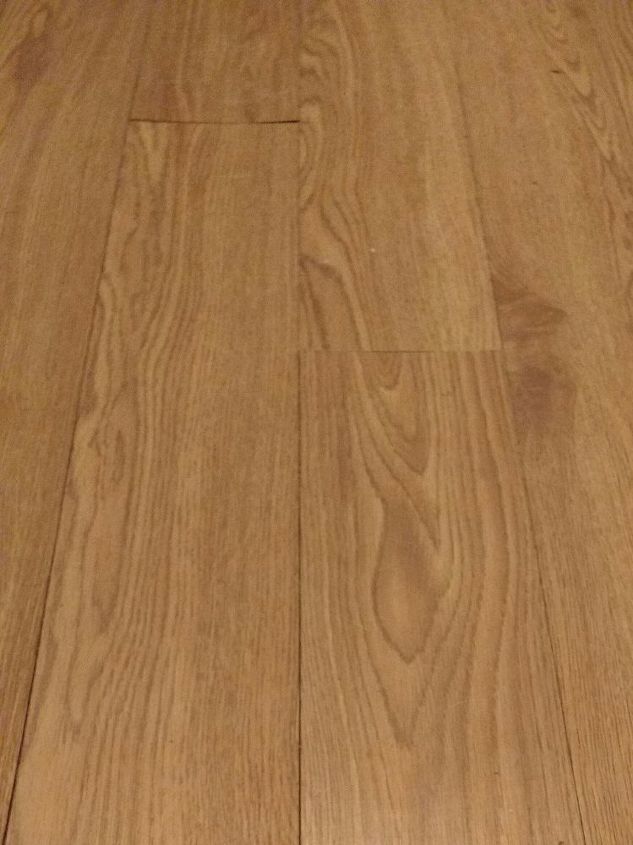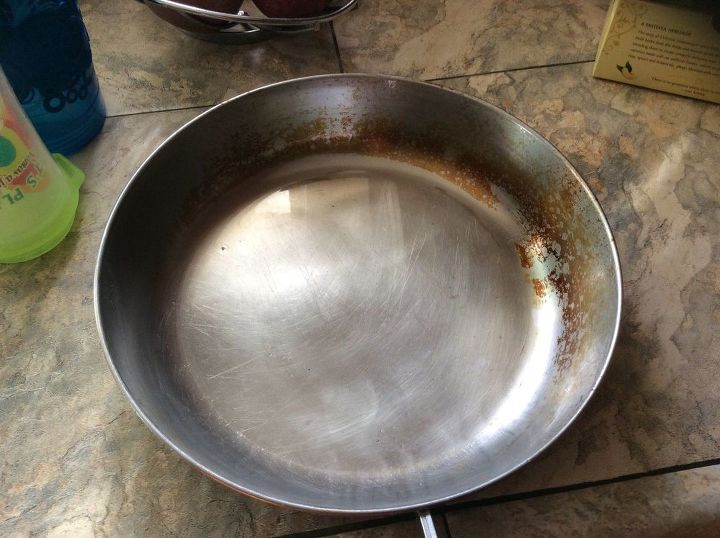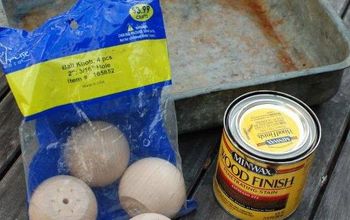Removing glue from vinyl plank flooring

-
Try using something like baby oil or makeup removers.
 Ellen
on Oct 29, 2016
Helpful Reply
Ellen
on Oct 29, 2016
Helpful Reply -
-
No extra adhesive should have been used. Do not sand because to can accidentally sand into the finish. To remove the adhesive, try some Goo Gone, Mineral Spirits, or nail polish remover (Acetone). Wear gloves. With edges that are cupping, lay a cloth over the cupped area, use an iron and go over the the area. Remove the cloth, then a either use a rolling pin or a 2x4 and go over the area applying pressure. The iron softens the adhesive and planks. Good luck.
 William
on Oct 29, 2016
Helpful Reply
William
on Oct 29, 2016
Helpful Reply -
-
Try Goo Gone
 Jean Blades
on Oct 29, 2016
Helpful Reply
Jean Blades
on Oct 29, 2016
Helpful Reply -
-
We just pulled up our kitchen floor. We had the same issue. We used a hair dryer and Goo Gone. Spread the Goo Gone onto the tacky area, heat an area with the hairdryer on high and gently scrape the area to remove the mess. You need to be careful with the amount of Goo Gone you use so that it doesn't seep under remaining boards and loosen them. Good Luck!
 Cathy Barney
on Oct 29, 2016
Helpful Reply
Cathy Barney
on Oct 29, 2016
Helpful Reply -
-
Both William and Jean have excellent suggestions. So sorry you had to go through this. Makes me hopping mad when stuff like this happens. Good luck and let us know how it turn out.
 Naomie Moore aka baileyanddaisey, Castaic CA
on Oct 29, 2016
Helpful Reply
Naomie Moore aka baileyanddaisey, Castaic CA
on Oct 29, 2016
Helpful Reply -
-
DO NOT SAND, IT WILL NOT WORK. Use acetone, the kind you buy in Lowes, make sure the room is well ventilated. It will remove the glue without harming the floor.
 Dee
on Oct 29, 2016
Helpful Reply
Dee
on Oct 29, 2016
Helpful Reply- See 1 previous
-
-
try WD-40 let it sit, may have to do a couple of applications...wipe with cloth or paper towel
 Janice Erickson Cathcart
on Oct 30, 2016
Helpful Reply
Janice Erickson Cathcart
on Oct 30, 2016
Helpful Reply -
-
As Janice said above, WD-40 will probably work as any oily product does something to release the adhesive from the surface. I used to work for a ready-to-assemble furniture company and that's what we always told customer to use to remove stickers from the parts and not damage the surface. Since it has been so long and it's dried, you may want to try using the hairdryer first as someone else mentioned just to soften it.
 Tina Morgan
on Oct 30, 2016
Helpful Reply
Tina Morgan
on Oct 30, 2016
Helpful Reply -
-
Goo gone is a very good option but it will be labor intense.You would have to do it in small patches.With the dryer set it on medium heat and have a putty knife or paint scrapper on hand.
 Sophia,M.,McConnery
on Oct 30, 2016
Helpful Reply
Sophia,M.,McConnery
on Oct 30, 2016
Helpful Reply -
-
Save your wrists and fingers from excessive pain if you decide to scrape. Go to your local Harbor Freight and get an Oscillating Multi Tool. ................ http://www.harborfreight.com/Variable-Speed-O... ................... I use one of these to scrape caulking and sealants from floors and counters as well as to make cuts in project pieces. These are really quite effective, a bit noisy, but the variable speed allows you to use the most effective speed. It really does speed things up.
 Phil a
on Oct 30, 2016
Helpful Reply
Phil a
on Oct 30, 2016
Helpful Reply -
-
We just recently had our hardwood redone and it had alot of glue and alot of cupping. We hired a small company. The man and one other man handscraped the whole floor and restained it and put a shine on it. I was amazed most all cupping was gone and all the glue had been scraped off. Turned out looking distressed and beautiful. Hope this helps.
 Mary
on Oct 30, 2016
Helpful Reply
Mary
on Oct 30, 2016
Helpful Reply- See 2 previous
-
-
The photo above shows glue she wants to remove on the plywood UNDERNEATH the vinyl planks. So it WILL work on the plywood. But if also removing the planks, this tool will do great at scraping them off by using the scraper blade underneath the plank. When in doubt, check YouTube.... https://www.youtube.com/watch?v=DIdlmz6Q6OU .... or..... https://www.youtube.com/watch?v=8wuTmmrtQoE ...... Easy-Peasy
 Phil a
on Oct 30, 2016
Helpful Reply
Phil a
on Oct 30, 2016
Helpful Reply -
-
check the photo: She's talking about the glue UNDER the planks. But this would also work for removing the vinyl planks. Let's check YouTube: ... https://www.youtube.com/watch?v=DIdlmz6Q6OU ..... https://www.youtube.com/watch?v=8wuTmmrtQoE .... Easy, Peasey...
 Phil a
on Oct 30, 2016
Helpful Reply
Phil a
on Oct 30, 2016
Helpful Reply -
-
Have you tried a heat gun maybe and scraping off when melted?
 Mary
on Oct 31, 2016
Helpful Reply
Mary
on Oct 31, 2016
Helpful Reply -
-
I used some WD 40.You can mix it with a little warm water spray the glue & let it soak a few minutes & it should come off with scraper easy.Also any type of sand.Rub some on the glue ,it kind of drys it out so it's not so tacky
 Deb Whitney
on Nov 01, 2016
Helpful Reply
Deb Whitney
on Nov 01, 2016
Helpful Reply -
-
The WD 40 worked pretty good for me.
 Deb Whitney
on Nov 01, 2016
Helpful Reply
Deb Whitney
on Nov 01, 2016
Helpful Reply -
-
If you can scrape the glue by hand, yes, you'd be surprised how much faster and well it works and will save your arms and hands. But, that $20 unit is a single speed model. It will work, but the variable speed model is more usable and you'll be surprised at how much you'll use it for other projects and the variable speed makes the cuts/scrapes work better under different conditions. Just my opinion. I've had mine for about 5 years and it's well built and can really come in handy. Phil
 Phil a
on Nov 02, 2016
Helpful Reply
Phil a
on Nov 02, 2016
Helpful Reply -
-
It never seeped through.I only waited a few minutes after spraying,Don't saturate it.I also used it taking paint and old wallpaper off the hard spots.
 Deb Whitney
on Nov 03, 2016
Helpful Reply
Deb Whitney
on Nov 03, 2016
Helpful Reply -
Related Discussions
How to clean a mirror without streaks?
Every time I clean my mirrors, they end up having tons of streaks and almost look worse than before I started. What could I use to clean them that won't leave streaks... See more
How to clean burns on stainless steel pans?
Help! I burned my pan. How do I clean stainless steel cookware that's been burned?
How to clean shower doors
How to clean glass shower doors
How to clean hardwood floors in the kitchen?
What is the best way to clean hardwood floors in the kitchen?
How to clean my kitchen cabinets from grease?
My kitchen cabinets are embarrassingly greasy. Please share your degreasing tips with me so I don't have to cringe every time I glance at my cabinets.
How do you remove purple primer from vinyl plank flooring?
Hubby dripped some purple primer on floor and I don't want to have to replace the floir.
How to remove vinyl glue from hardwood floor?
We're refinishing the floors in our 1934 farmhouse-- the original hardwoods were hidden underneath carpet in the kitchen, and vinyl in the dining room. They adhered... See more






